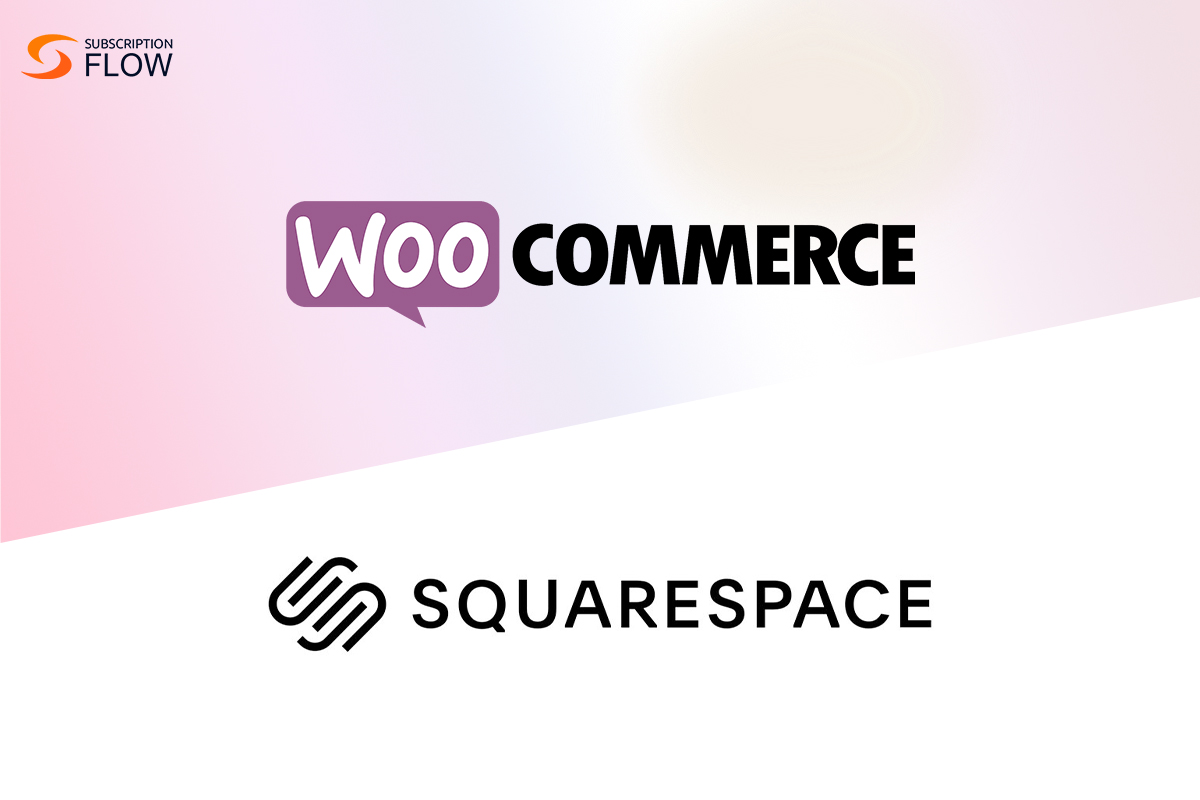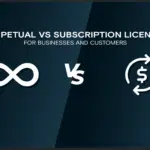
Design, Functionality, and Sales: WooCommerce vs Squarespace
An estimated 2.64 billion people have made at least one online purchase by 2023. The worldwide e-commerce market growth rate peaked at 17.1% in 2021, and it is expected to remain at or above 8% in the coming years.
The allure stems not just from the prospective riches, but also from the fact that setting up an e-commerce internet store is now easier than ever.
WooCommerce and Squarespace are just two of the various web applications that may help you easily create your own e-commerce shop. But what’s the distinction between the two? And which one is most suited to your project?
In this article, we break down WooCommerce vs Squarespace so you can make the most suitable choice for your business goals.
What is WooCommerce?
WooCommerce is a robust and highly popular e-commerce plugin designed for WordPress, one of the most widely used content management systems (CMS) for building websites. Developed by Automattic, WooCommerce allows users to transform their WordPress websites into fully functional online stores with ease.
It provides a comprehensive set of tools and features to handle various aspects of e-commerce, including product management, payment processing, shipping, and more. At its core, WooCommerce offers a user-friendly interface that seamlessly integrates into the WordPress dashboard. This integration enables users to leverage their familiarity with WordPress while harnessing the power of e-commerce.
With WooCommerce, users can easily create product listings, organize them into categories or tags, set prices, and provide detailed descriptions. The platform also supports various product types, from physical goods to digital downloads and even subscription-based services.
KEY STRENGTH
WooCommerce excels in its flexibility and extensibility. The plugin can be extended with a wide range of add-ons and plugins, allowing users to tailor their online stores to their specific needs.
These extensions cover areas like payment gateways, shipping methods, inventory management, marketing tools, and more. This adaptability makes WooCommerce suitable for businesses of all sizes and industries, from small local shops to larger enterprises with complex e-commerce requirements.
Read more: Managing the Barriers of Subscription Management in WooCommerce with SubscriptionFlow
What is Squarespace?
Squarespace is a versatile and user-friendly website-building platform that enables individuals, businesses, and creatives to create visually stunning and functional websites without requiring extensive coding knowledge.
Founded in 2003, Squarespace has gained popularity for its combination of elegant design templates, drag-and-drop interface, and a range of integrated features. The platform is known for catering to a diverse range of needs, from personal blogs and portfolios to e-commerce stores and business websites.
Squarespace also offers e-commerce capabilities, making it an all-in-one solution for both website creation and online selling. Users can set up online stores, manage inventory, process transactions, and integrate various payment gateways seamlessly.
The platform provides tools for showcasing products, organizing them into categories, and even offering discounts and promotional campaigns. With its emphasis on design, ease of use, and comprehensive features, Squarespace has established itself as a go-to platform for individuals and businesses seeking to create a visually appealing and functional online presence.
KEY STRENGTH
One of Squarespace’s standout features is its collection of professionally designed templates. These templates cover various industries and aesthetics, ensuring that users can find a design that resonates with their brand or personal style.
The templates are responsive, meaning they adapt to different screen sizes, providing a consistent and visually pleasing experience across devices. Users can further customize these templates using Squarespace’s intuitive drag-and-drop editor, which allows for effortless rearrangement of content elements, such as text, images, videos, and more.
Read more: How and Why Hollywood Bigshots Like HBO Use Squarespace to Manage Their Membership
The Benefits of E-commerce Platforms
E-commerce platforms offer a wide array of benefits that empower businesses to establish and manage successful online stores. These platforms provide the tools and functionalities necessary for entrepreneurs and established brands alike to tap into the global digital marketplace. One primary advantage is the convenience they offer in setting up and running an online store.
E-commerce platforms like WooCommerce and Squarespace come with user-friendly interfaces and intuitive setup processes that allow users to create their own customized online stores without extensive technical knowledge. This democratization of online selling enables businesses to quickly establish their digital presence and start selling products or services.
Furthermore, e-commerce platforms enhance the shopping experience for customers. They provide features such as product categorization, search functionality, customer reviews, and integrated payment gateways, making it easier for shoppers to find and purchase products. Additionally, these platforms often offer responsive and mobile-friendly designs, ensuring a consistent and enjoyable shopping experience across various devices.
E-commerce platforms also offer various marketing and analytical tools that enable businesses to effectively reach their target audience and track their performance. These tools encompass SEO optimisation, social media integration, email marketing, and analytics dashboards that provide insights into customer behaviour and sales trends. By harnessing these tools, businesses can make informed decisions to optimize their strategies, refine their offerings, and ultimately drive sales growth.
Let us now look at Squarespace vs WooCommerce in terms of important aspects of functionality and flexibility.
WooCommerce vs Squarespace Comparison
WooCommerce and Squarespace are two distinct platforms that cater to different aspects of online presence and commerce.
Below, we’ll outline the key points of comparison between WooCommerce vs Squarespace:
1. E-Commerce Focus
WooCommerce: WooCommerce is a plugin designed specifically for WordPress websites, transforming them into full-fledged e-commerce stores. It’s highly customizable and ideal for businesses looking for advanced e-commerce features, flexibility, and control over their online store.
Squarespace: While Squarespace does offer e-commerce capabilities, it’s a website-building platform first. E-commerce is just one aspect of Squarespace’s offerings, making it suitable for individuals and businesses that want to combine e-commerce with other types of content, such as blogs, portfolios, and informational pages.
2. Flexibility and Customization
WooCommerce: Known for its flexibility, WooCommerce offers extensive customization options. Users have access to a wide range of themes, plugins, and extensions, allowing them to create highly tailored online stores that suit their branding and functional requirements.
Squarespace: Squarespace offers customizable templates and a user-friendly drag-and-drop interface for building websites. While it’s more user-friendly in terms of design, it might not provide the same level of customization and control as WooCommerce, especially for businesses with complex needs.
3. Ease of Use
WooCommerce: WooCommerce requires a basic understanding of WordPress, and the learning curve might be steeper for those new to WordPress. It’s suitable for users who are willing to invest time in learning and configuring the platform.
Squarespace: Squarespace is designed to be user-friendly, making it accessible for beginners without technical knowledge. The intuitive interface and templates simplify the process of building and managing a website, including the e-commerce component.
4. E-Commerce Features
WooCommerce: WooCommerce provides a vast range of e-commerce features, such as advanced product management, various payment gateways, detailed inventory control, and extensive shipping options. It’s well-suited for businesses with diverse e-commerce needs.
Squarespace: Squarespace offers e-commerce tools like product listings, customizable checkout processes, and integration with payment gateways. However, it might not offer the same level of advanced e-commerce features as WooCommerce, making it more suitable for smaller or simpler online stores.
5. Scalability
WooCommerce: With its flexibility, WooCommerce is highly scalable and can grow with your business. It’s ideal for businesses that anticipate significant growth and might need advanced features as their operations expand.
Squarespace: While Squarespace can handle e-commerce, it might have limitations in terms of scalability for larger, more complex online stores. It’s generally better suited for smaller businesses or those with less complex e-commerce needs.
Read more: Comparing eCommerce Giants: BigCommerce vs. Shopify vs. Squarespace
Final Word
Thus, e-commerce platforms provide the convenience of easy setup, a streamlined shopping experience, and a suite of marketing and analytical tools. These benefits empower businesses to establish a solid online presence, engage with their audience effectively, and drive their growth in the competitive digital commerce landscape.
The choice between WooCommerce vs Squarespace depends on your specific needs and preferences. WooCommerce is best for businesses seeking advanced e-commerce capabilities, customization, and scalability within a WordPress environment.
Squarespace, on the other hand, is a versatile platform suitable for those who want a user-friendly website builder with integrated e-commerce capabilities and don’t require the same level of customization and complexity offered by WooCommerce.
Book a demo with SubscriptionFlow to find out integrations with these platforms can help your business!










